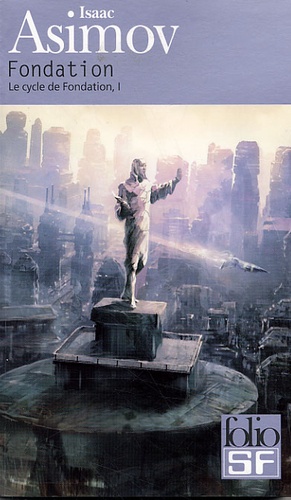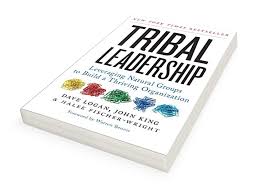Mixing face-to face engagement and distant monitoring has become a reality for Managers. Access this guide to get best practices and tips for managing remote workers.
 We have suddenly and unwittingly entered a future world of work.
We have suddenly and unwittingly entered a future world of work.
The Covid-19 situation rimes with volatility, uncertainty, complexity and ambiguity (VUCA), forcing us to work differently, and forcing many managers to lead remote teams.
In his series of science fiction renowned novels “Foundation”, started back in 1951, Isaac Asimov anticipated human beings disseminated in the entire galaxy, spread on millions of planets. Because of distance and to avoid contamination, humans had limited face-to-face interactions and preferred virtual communications using screens. When they had to meet, social distancing was a must…
Does this sound like a “déjà vu”?
This new routine implies adjusting management methods .
We could benefit from tips shared by professionals who have led remote teams for many years. Please find hereafter what they recommend to remove barriers of distancing and isolation . The need to knows they share are inspiring and insightful.
Kamal UBAYSI is Global Head of Commercial Partnerships – Revenue Growth at Sanofi (www.sanofi.fr/fr). Kamal travels regularly on all continents and is familiar with this management mode. According to him, involvement is key, especially to manage the relationshipp . A second essential driver consists in creating a communication routine. “With remote work, we run the risk of rifts between members of the same organization, which should not be denied nor minimized. It is therefore important to establish and maintain team rituals with or without the manager. »
Caroline HERNU is Head of Strategy at Macopharma (www.macopharma.com/en. As such, Caroline interacts with people based in different parts of the world. First and foremost trust, clear and explicit split of roles, responsibilities and tasks are a must. “It is impossible to manage remote teams without trust. This necessity must be clearly stated. We must avoid micro-management because it destroys trust. »
Xavier AUBERT is Chief Operating Officer for Nicols International Group (www.nicols.fr/). Xavier explains that managing remote teams is a continuous learning experience: each manager must adjust techniques depending on the situation and challenges teams face. “When I joined Nicols, I had limited experience of leading distant teams. I had to adjust and learn how to work with my employees from different cultures and countries across Europe. I believe managing remote teams requires to consider the unicity of each individual. Being supportive, not intrusive pays off being flexible results in higher accountability and engagement among the team. Managing remote employees requires to rethink relationships. »
Sharen STANBRIDGE is Board Member at Minitab (www.minitab.com/). Sharen reveals that Blended Management is a great solution. Not all can be done remotely. When the situation allows, face-to-face interactions help tremendously. “If you can’t be around, you have to add video calls from time to time to phone and written interactions to capture non-verbal expressions. It is also important to bring the team together in order to keep the spirit of the group. Of course, this is on top of the individual “one-on-one” meetings where sharing both personal and professional experiences is beneficial because human beings also need non-formal relationships. »
Philippe BENQUET is the President of the Acorus Group (www.groupe-acorus.fr). Philippe mentions how important it is to speak on a weekly basis with direct reports and to have regular get together with all employees. “I convened a daily crisis committee during the first weeks of lockdown. Today we reverted back to our our usual (now remote) weekly meetings and added a rather unformal meeting, without an agenda. I also schedule regular “one-on-one” touch points. Business unit managers act the same with their teams. As far as I am concerned, I also record a video broadcasted to all employees at least once a week, which is very much appreciated.”
According to these team leaders who experienced managing remote workers, the results are really positive:
 1. Personalize the relationship to create trust.
1. Personalize the relationship to create trust.
A pitfall to avoid when managing a remote team is not taking the time for the socialization between colleagues that would naturally happen if the teams were located in the same place. Limiting interactions to emails sent to teams with a list of tasks and deadlines is a high risk when working in isolation in front of the computer. Maintaining personalized relationships is essential to create and maintain a strong human bond: beware of limiting exchanges to electronic messages stored in our mailboxes. Making the time is a real investment in the development of the human relationship. Cross-personal exchanges by phone or ideally video calls are preferable and, of course, one must take advantage of all opportunities for sharing face-to-face, even virtually if remote. It is also an opportunity to check the “temperature”. During these recurring touch points, we advise you remember the previous conversation and pursue it. It is important to ensure continuity in one-on-one communications. These key moments help to create a strong personal relationship and trust, beyond group meetings and exchanging daily.
2. Clarify responsibilities and expectations and remind the requirements.
The aim is to define the boundaries of each person’s role and responsibility, to clarify the manager’s expectations and the employee’s needs with a goal to meet the objectives and deadlines. Each person must be made aware of their role, their objectives, responsibilities and task scope.
A critical check when managing workers remotely consists in a tailored efficient follow-up. This close monitoring is obvious for any relationship between a manager and their reports, it is extremely important when one-on-one face-to-face personal sharing is limited. For example, it is useful to run interviews every week face-to-face: the idea is not to take the to-do list and systematically check completed tasks and tasks still due, but to review the progress of projects with more of fewer details depending on the autonomy of the team member. Building a roadmap is essential. The manager must put in place appropriate reporting tools that will facilitate the best possible alignment.
Secondly, avoid micro-managing: “I was connected at 9am and I realised you were not yet available on Skype, how come…?” Managers should not be frustrated if they are not able to communicate instantly with a team member. Everyone has the right to take a break, disconnect from their laptop and are encouraged to exercise regularly. At the opposite, a manager should be involved and connected, avoid such reactions as: “I trust you, you know your goal so act on it… you don’t need me; we’ll connect next month… ».
Last but not least, when managing remote teams, you need a combination of control, monitoring progress made ; trust, showing you are confident in your reports ‘ competencies and support, letting your reports you can help them to achieve their goals. . Managers stay tuned, and are demanding. You have to be able to re-align when work goes off tracks. Remote work, though more flexible, does not justify delay or overflow on projects.
3. Communicate in a clear, concise, effective and positive way.
Working remote, it is extremely difficult to identify the discrepancies that may exist between what you intend to say and what is perceived. It is therefore necessary to constantly check that your audience understood what you meant. Distance blurs the signals and reduces the echo, messages do not always come through. All messages have to be as simple and straightforward as possible (reword and rephrase your key message to amplify and clarify it) to avoid misunderstandings. The manager must express ideas using words teams would speak. Managers need to ask team members to state what they understood and how it applies to them. Unless conveyed with non-verbal communication and should not be considered as full acceptance from the employee, by the Manager. You also have to provide feedback and praise when something is right (please remember to give some recognition to the one person who feels lonely or isolated), and to redirect praising when appropriate. The team must also find solutions to problems (positive attitude), not only list problems (vicious circle of negativity). Another important attitude is to define precisely the purpose of each meeting. Working remotely, one may be tempted or enclined not to set clear objectives for a meeting. Being very specific about the expected deadlines/responsibilities of each person at the meeting is actually fundamental.
 4. Adjusting to new distant working conditions
4. Adjusting to new distant working conditions
Technology and quality of signal, homeworking (with family constraints – children / mate /parents / pets …) must be taken into account. We must accept that “90% of something is better than 110% of nothing” …
It is also important to ensure that all factors that drive success for communication are in place and are appropriate for stakeholders: background, frequency, timing in the working hours, and content. It is also important to take into account employees’s constraints and limitations (different time zone, personal obligations…) and to include them in the company operations. Thus meetings in the morning CET are at 3am EDT in Montreal, meetings early afternoon CET are actually occurring at midnight AET in Auckland … Try to avoid scheduling series of meetings outside of normal working hours for participants. Which means that managers often have to talk to people very early in the morning and very late at night on the top of a full day’s job. Such regular meetings are important for engaging the troops and also for maintaining a close interaction with teams, and effectively limits the number of emails already astronomical. There is obviously a risk of exhaustion and burnout, hence managers need to make sure they manage their time responsibly and take care of themselves.
Another point is proactiveness with unexpected formats for gatherings to initiate what could actually happen in the company restaurant: eg. “virtual breakfasts” that allow you to spend 20 minutes with the team or one-on-one meetings with individuals who are new to you (to discover other business units or departments, and have the opportunity to explore). It also enhances teams/individuals who feel the company and the manager actually care.
5. Creating routines in communications
Managers should set up regular one-on-one meetings and encourage isolated employees to make some time to connect with their colleagues on a regular basis, just as they would make the time if they had coffee at the office. To ensure a trustful relationship when working remotely, it is necessary to agree routines with the person you want to address. Always start with personal matters rather than work-related topics, remember how we interact in coffee breaks when we share the same workspace.
Determining regular placeholders can and should also be decided for and with the team. Managers should be encouraged to set up and hold frequent meetings with their team members (ideally weekly, with mandatory participation) for alignment and harmony. The will then ensure each and every one can talk openly with a similar time slot to express what they want to say. Launching team projects impacting the group can also help to create a positive atmosphere. You can organize virtual coffee breaks 20 minutes every 3 days to check how everyone feels, talk about the weather if necessary, provide some general information about the company. Setting up daily and weekly routines helps during lockdown: managers sometimes even feel closer to their teams than before (because the exchanges are more personal, more human, as they see workers at home, sometimes with their pets, their kids…). These routines create new, stronger bonds.
6. Be transparent and ensure that information is passed on
Managing remote teams also requires a great deal of discipline in collecting and processing information. It is essential to know how to prioritize subjects according to their importance and urgency. Setting up a successful collaborative mode to track and share information is key for a leader managing remote workers. A Manager will not be able to share the latest news or decide which project has priority in a corridor or at the coffee machine. Besides, it is important to share company news and to ensure information flows both ways. While teams need to be informed about decisions and changes, they need to provide field information to management, reporting on local events that may affect the business. Taking into account the country specifics, being aware of the cultural and economic situation of each territory in which teams operate is key and should be fed back to top management.
7. Formalize work meetings
 Face-to-face team meetings need substantive topics and require preparation. We need to stay in touch with the team: both monitoring projects and for personal interactions.
Face-to-face team meetings need substantive topics and require preparation. We need to stay in touch with the team: both monitoring projects and for personal interactions.
Regarding projects: virtual meetings with the entire team should be held to ensure alignment, communication around the project status and progress made. Touch points to focus on specifics of each project are critical for a manager working with remote team members.
Regarding the one-on-one relationship: communicating around who does what, who is where, finding the right balance between quality time as a group (team building or individual) and work. For example, make individual phone calls, have a WhatsApp team group for fun with one message per day. Also understand and balance the differences in mindset and attitudes between different personalities within the teams.
It is important from time to time to ask one of the team members to present the team’s work to another team, or to invite an expert or leader. Please always show the value of your team’s work to top management and stakeholders.
8. Show empathy, listen to weak signals
Managing remote teams requires to pay attention to the human being … Check that employees work in an appropriate environment (a room where they can isolate themselves) and have the right technology and tools (nothing worse than an internet connection that doesn’t work) even before the home office is implemented. It takes active listening and empathy, more than when working in the same environment: during lockdown, we must not underestimate the challenge of detecting the obstacles and difficulties team members face: it is necessary to ask qualifying questions: do not limit the discussion to “hi, are you okay?”. You have to ask open-ended questions: “What are the difficulties you have encountered this week? What were your best/worst moments? How do you get organized?
There are pitfalls to avoid: for example, the communication path needs to be adjusted to the type of message to transfer. Email is not recommended to announce bad news or to change task allocation. Some situations require a face-to-face conversation virtually or in the same room… Then during phone or video calls, you have to know how to take some distance and not react. You should never react spontaneously, but be able to respond in a structured way, even if it means delaying the reaction or response for some time. If you encounter one or more of the following signs, please beware because a person may be at risk:
- A co-worker is often absent from meetings.
- A co-worker gives an excuse not to turn the camera on during a video call.
- A team member barely contributes during the meeting, even when prompted to do so.
- Deadlines are missed.
To detect weak signals of potential disorders that might appear in a remote worker’s attitude, trust is required to talk openly. Managers can get alerted either by the person at risk or by someone else who has “felt” something. You really have to listen. For example, project delays or a reduced quality of work must prompt us to react. So, the more direct contact a manager has with teams … the better and faster problems can be tackled.
 9. Manage your availability
9. Manage your availability
Leading remote workers requires discipline in terms of time management: time must be used wisely and purposely, hence the important role of the “timekeeper” in meetings. It is also important to save time by sharing information in real time on a common digital platform with a predefined method for archiving, with straightforward, clear and comprehensive rules. As a manager, you should always be available, yet not overwhelmed: set time slots for meetings, while you remain available for calls because you are (internal) customer centric.
10. During and after lockdown, promote blended management
Managing remote teams effectively cannot be achieved 100% through virtual meetings and communications. Interactions/regular face-to-face work are essential as soon as possible. Meetings can be held remotely, especially when teams are far away, for example when some team members are in Europe and the rest in Hong Kong. Managers need to understand that it is important to have a face-to-face meeting in a same workspace at least once a quarter.
As a conclusion, the key drivers to successfully manage remote workers are: personalizing the relationship to support and monitor, building trust through empowerment and autonomy, showing empathy for each other’s situation, providing clarity regarding the roles and responsibilities to avoid confusion about the expected results, structuring – formalizing – standardizing work meetings and one-on-one catch up meetings , ensuring that internal processes are seamless and accessible, checking that technology and tools are meeting employees’ needs, ensure that communication is simple – positive – comprehensive, being transparent and available to employees. Last but not least, meet people “in real life” on a regular basis if possible (humans are social animals).
At AC Mentoring, we help managers to adapt to these new and sometimes complex situations. We are currently developing a service offering to help our customers define the best ‘blend’ for them. Our raison d’être is to support organizations to adopt more agile management and people to align what they are with what they do.










